Co-Habitat
-Affordable Housing Design-
Designer: Ning Ding & Donggun Kim | Near South Side, Buffalo, 2019
![]()
![]()
Designer: Ning Ding & Donggun Kim | Near South Side, Buffalo, 2019
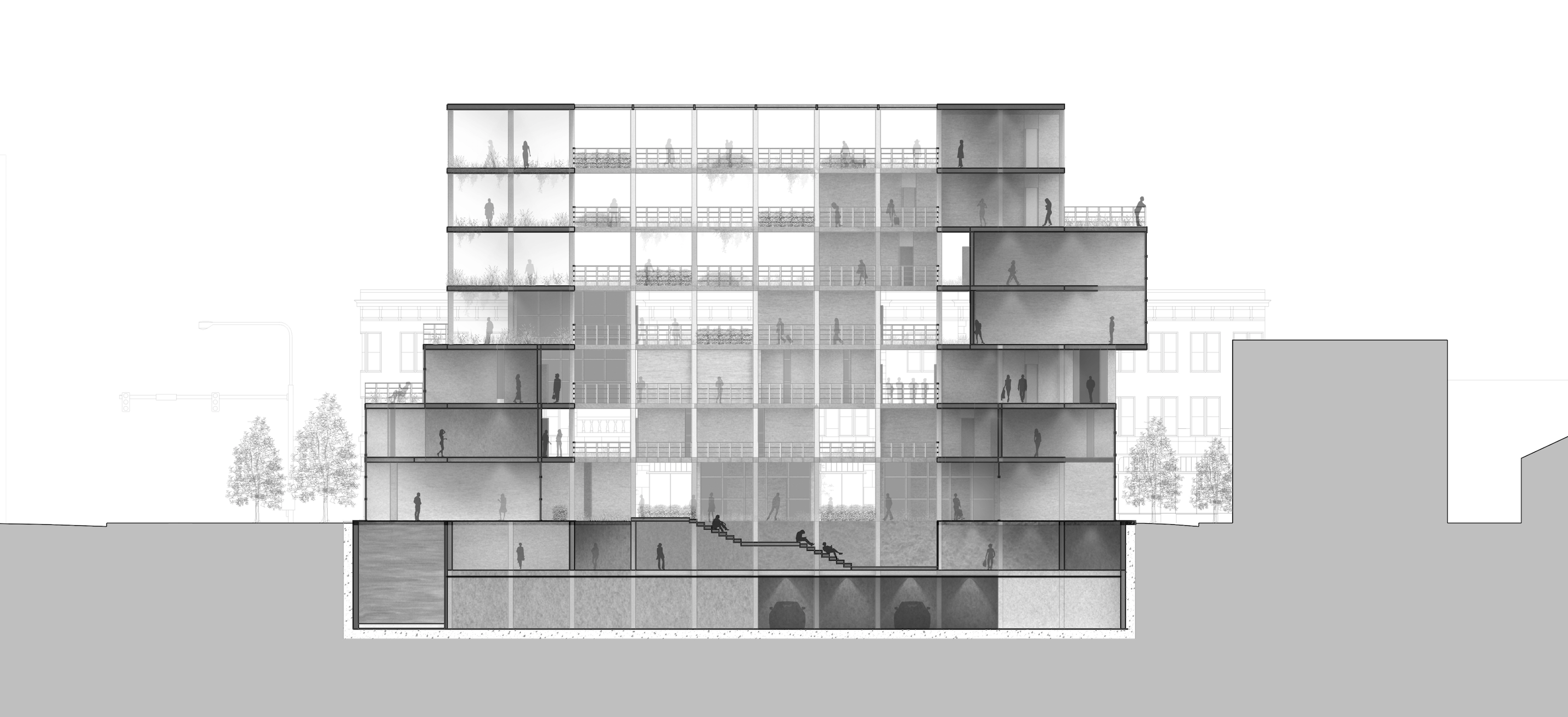

Focus:
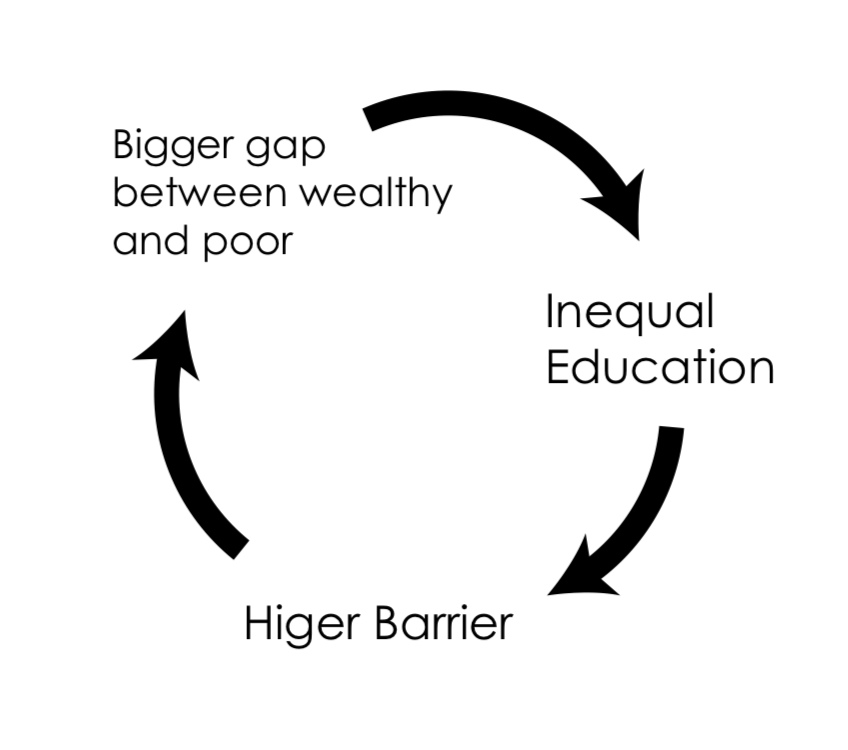
lntende Residential Segregation in the United States has been illegal since mid-1900s. But the patterns of housing show that the segregation is persistent for certain races and income groups.
What separates the residential pattern between the races?
One of the main reason is due to a big gap of household income, between each race. The US census Bureau also provides a breakdown by self-indentified ethnic groups as follows.
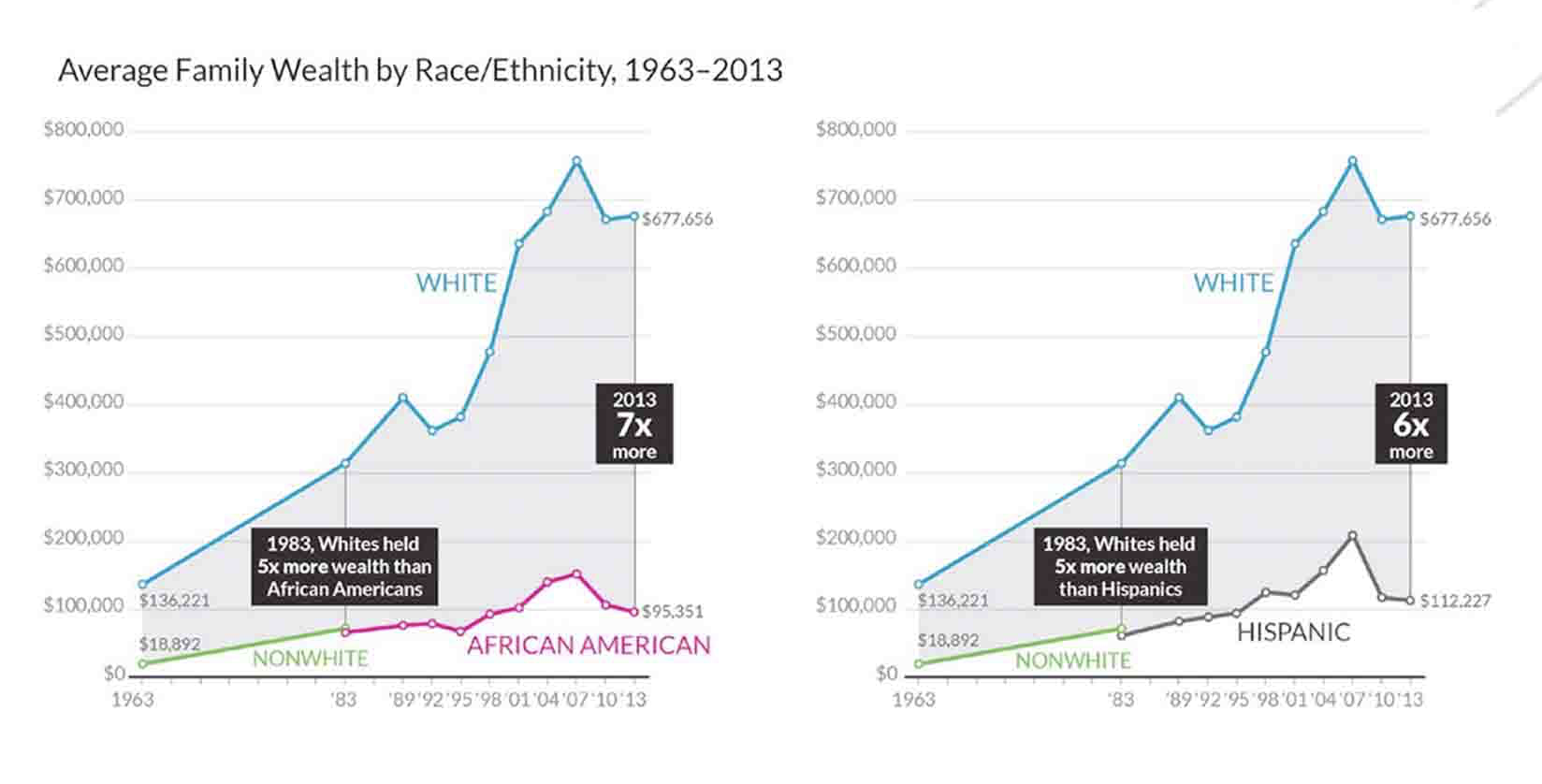
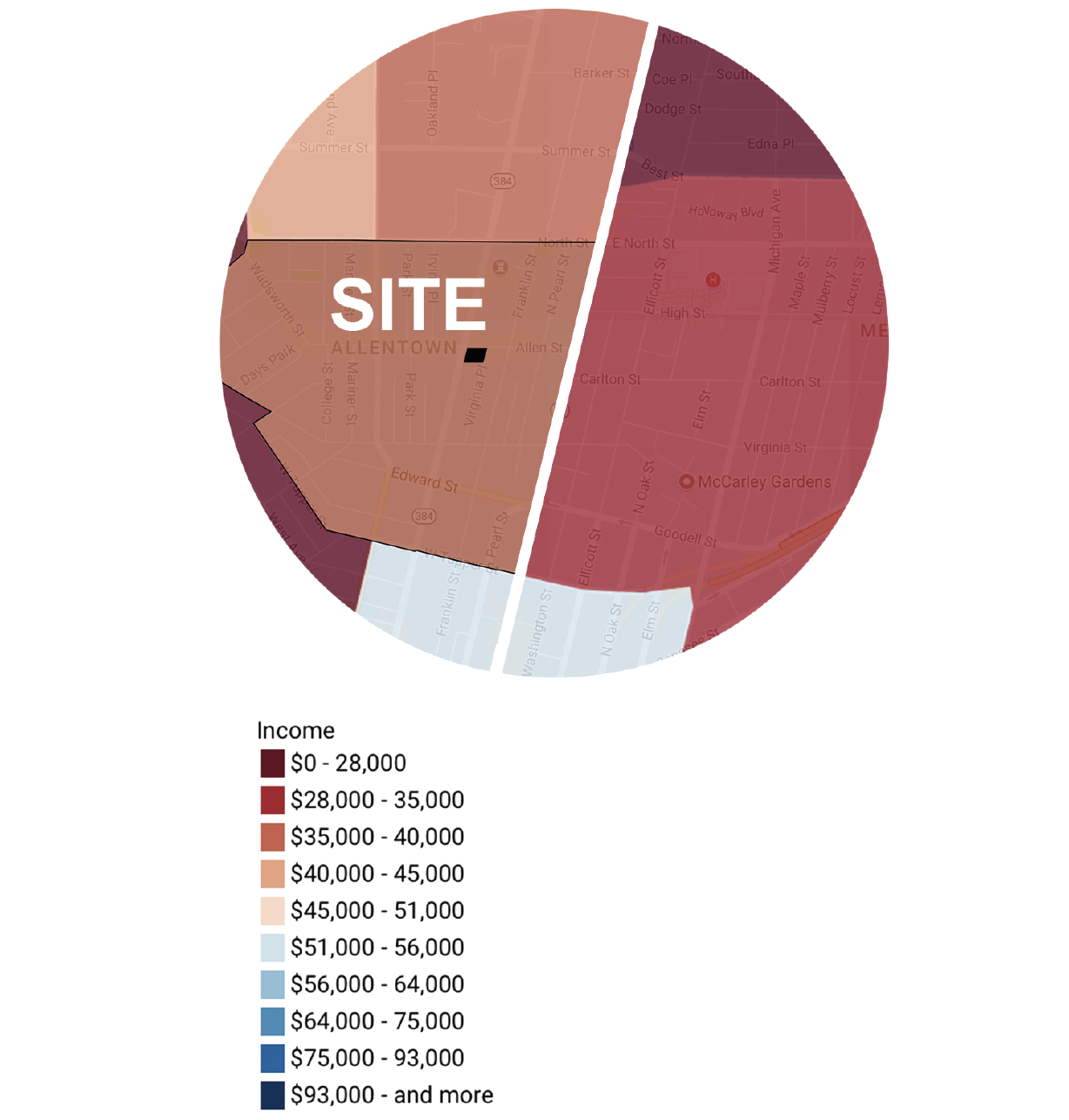
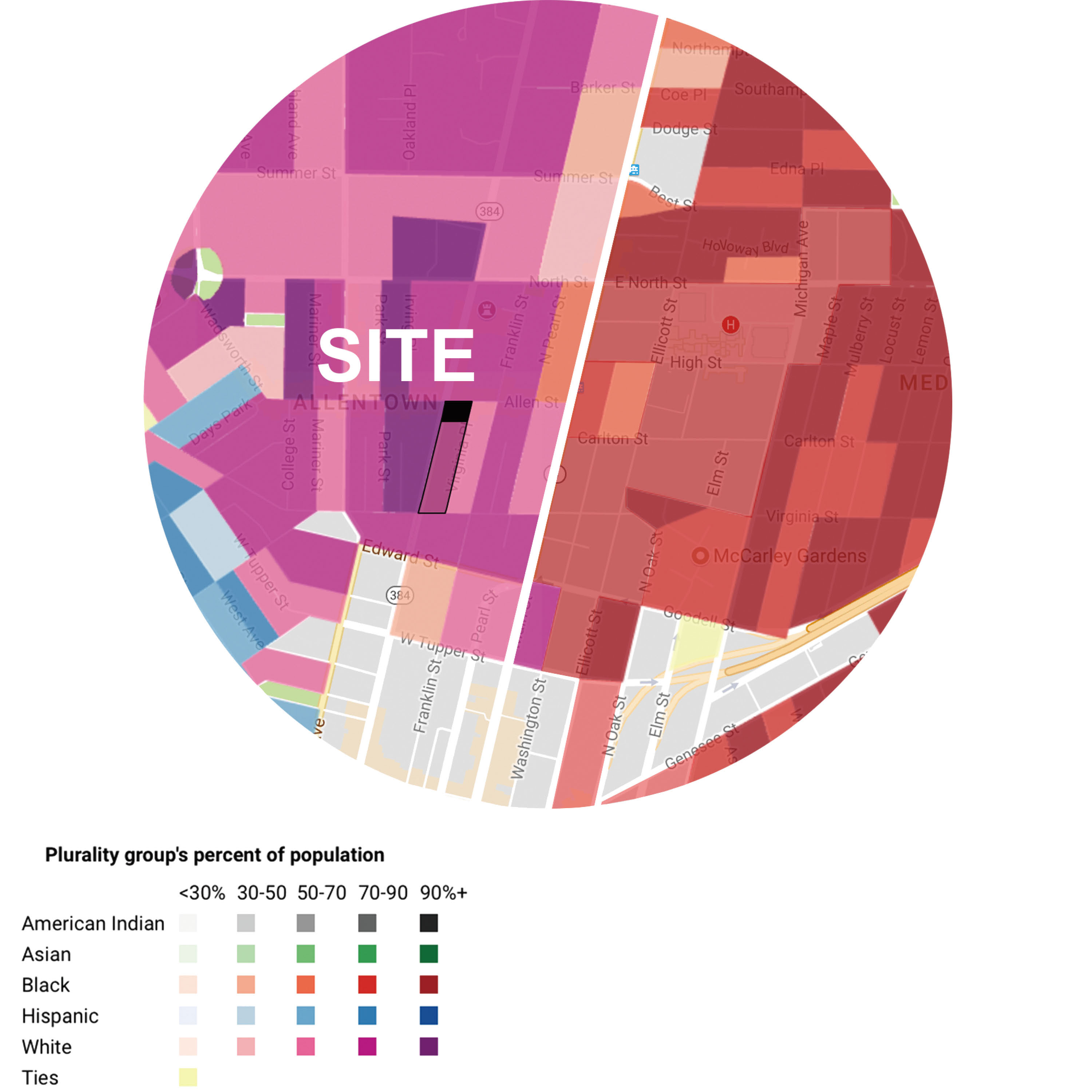
What are the negative aspects of inequality and segregation?
The higher the level of economic inequality, the higher will be the social barriers between groups and the less individuals will feel familiar with and connect to other people. As the barrier gets higher, the children will have inequal life chances that they supposed to deserve. The socio-economic divide can also grow over time by itself, just by transmitting advantages and disadvantages from one generation to the next, leading to a bigger gap between the two communities.
Can a building promote economic justice?
The building will combine 50% of the wealthy residence and 50% of less wealthy. It will allow them and their children to communicate and grow up in a same environment with each other. The less wealthy people will have the residential units that are more flexible than the wealthy people's so that they can adopt the new market places.
Co-Habitat is a aims to provide a shared community space that houses varied income groups in its residential sand public program. With the rising state of income inequlity, we wanted to break the social barriers so that children and young adults are open to the opportunites of education that may not be provided in the public school system. Both (residential and public) focus on fostering entrepreneurship. The public program- focused on technology and green technology is primarily housed in the courtyard and basement, but is also distributed throughout the "GREEN WALL" in outdoor spaces and green houses. The void spaces include agriculture. In addition, a commercial program is housed at the street level and the top floor UNITS- to bring the larger Buffalo community into the building. To encourage engagement between neighbors and students. Indoor and outdoor courtyard- terraces with educational programming are provided on every level by using a the push-and-pull system of unit aggregation.
education center,it can be used as hot desking, a temporary office space, during school time by previous students.
Movable Plugin Live-Work Units
Based on the concept, the apartment is designed to become a space that not only can benifit the residents, but also bring the economic activities and energetic community together.
We redefined the units to allow for choice in their level of privacy of program. Flexible units allow the residents to either choose their units to be live and work space or complete private living space.


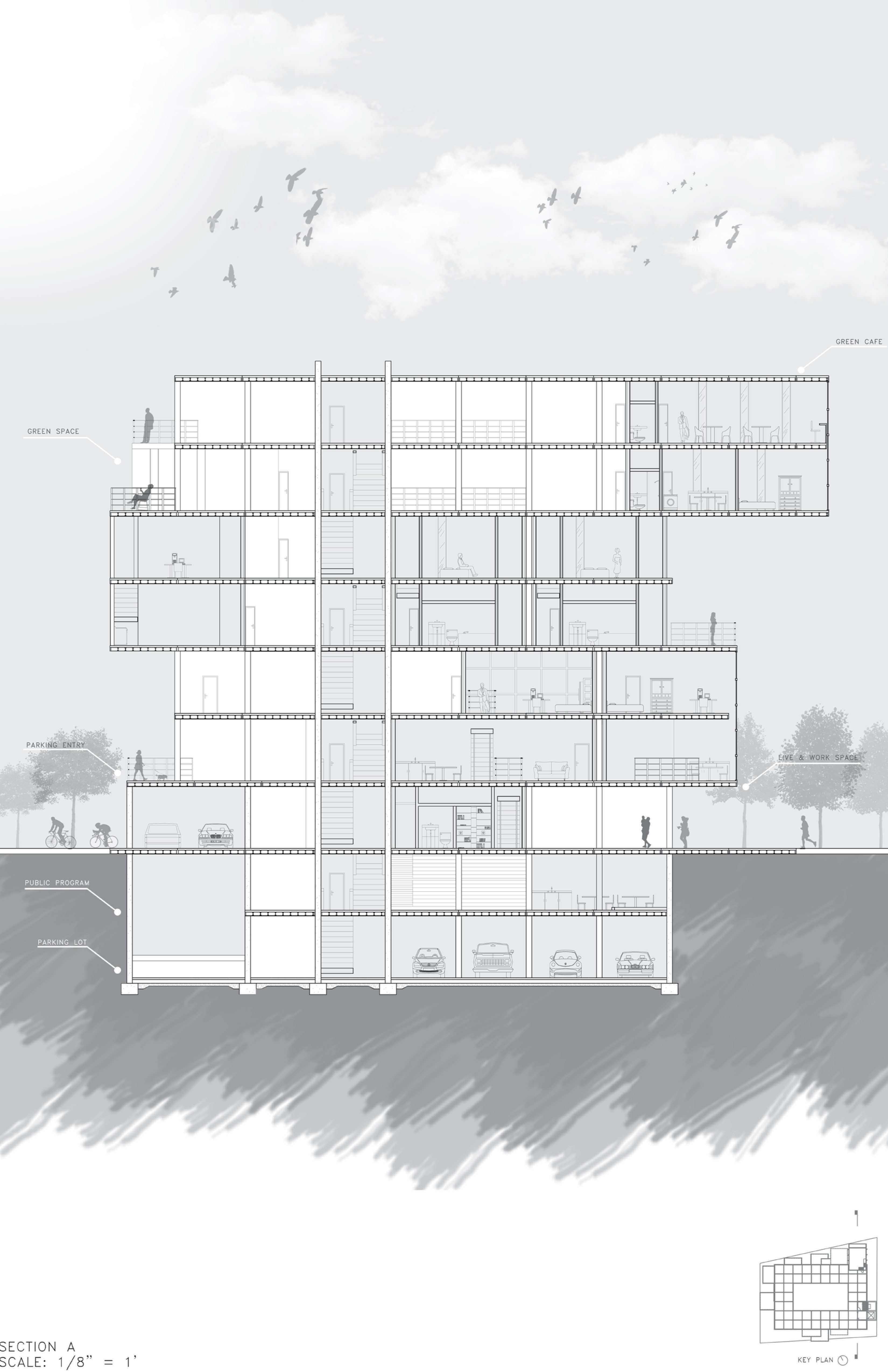

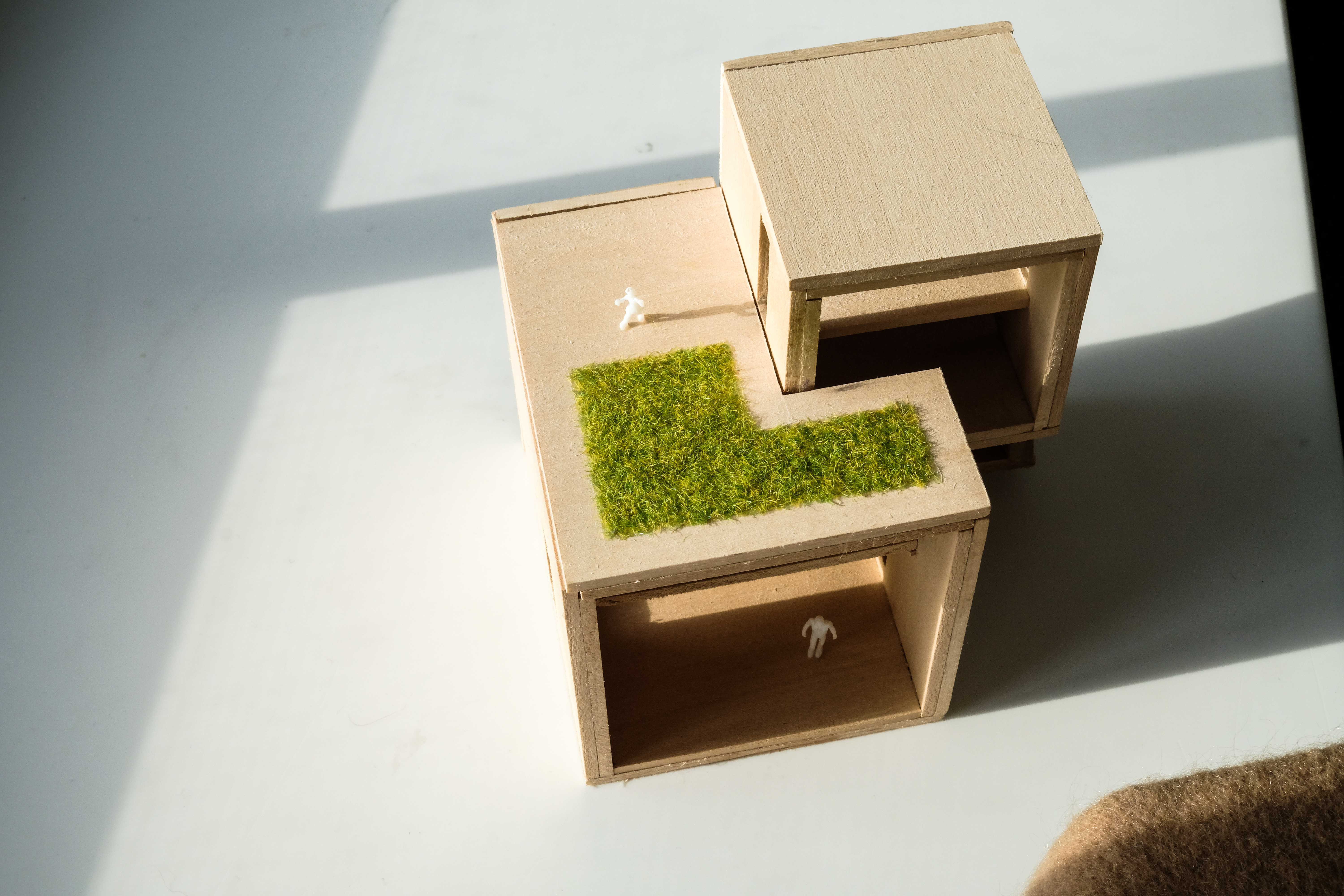




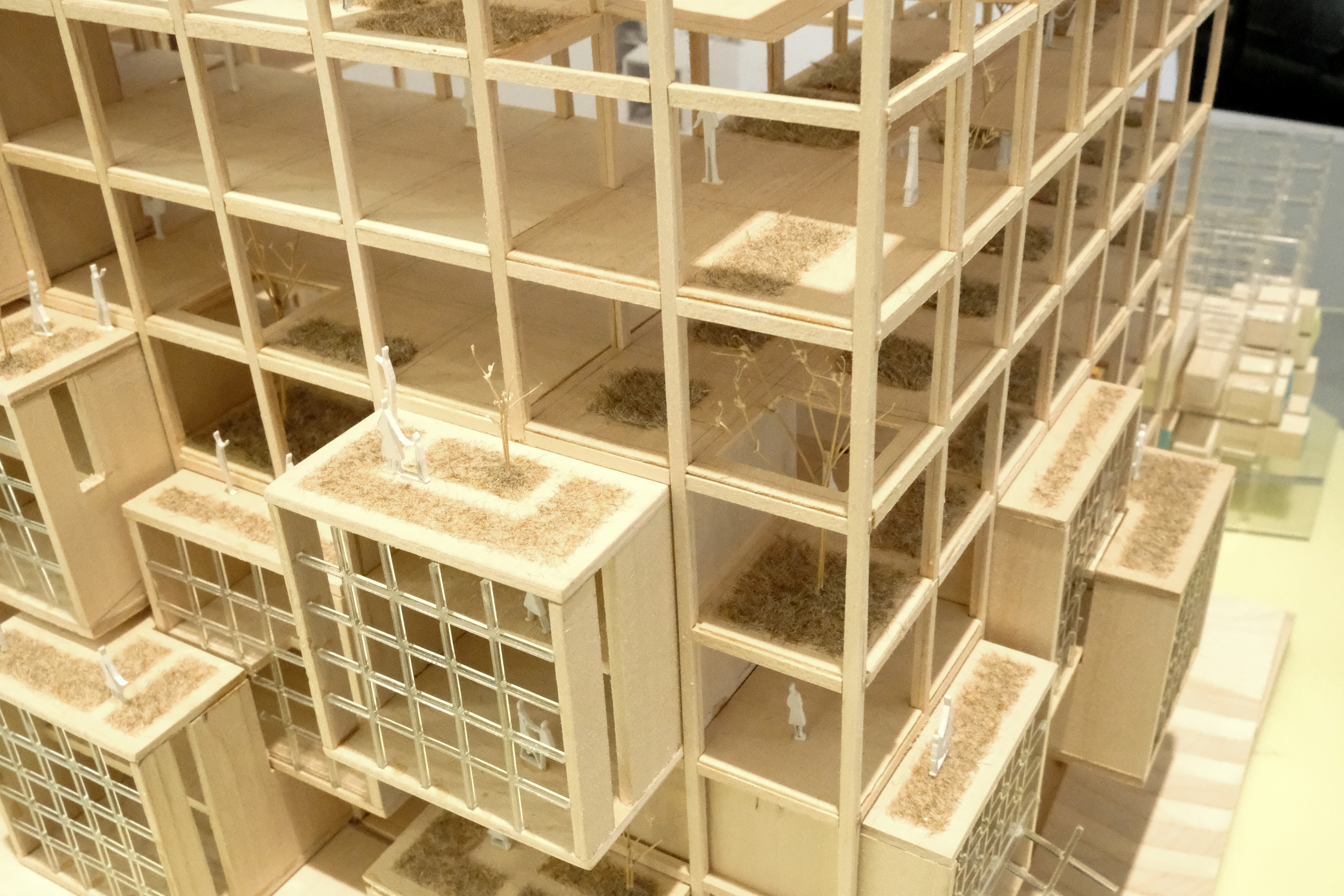



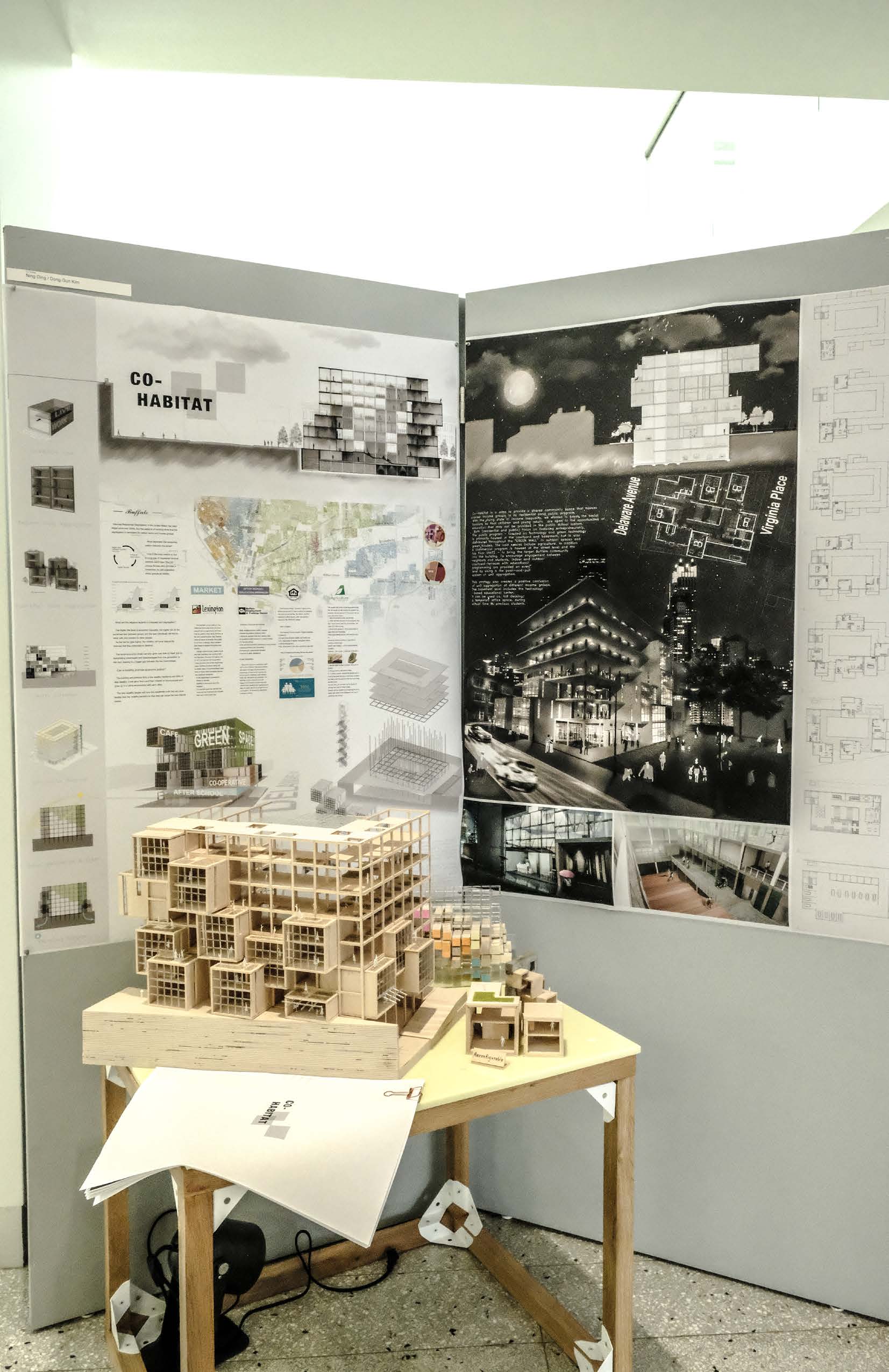
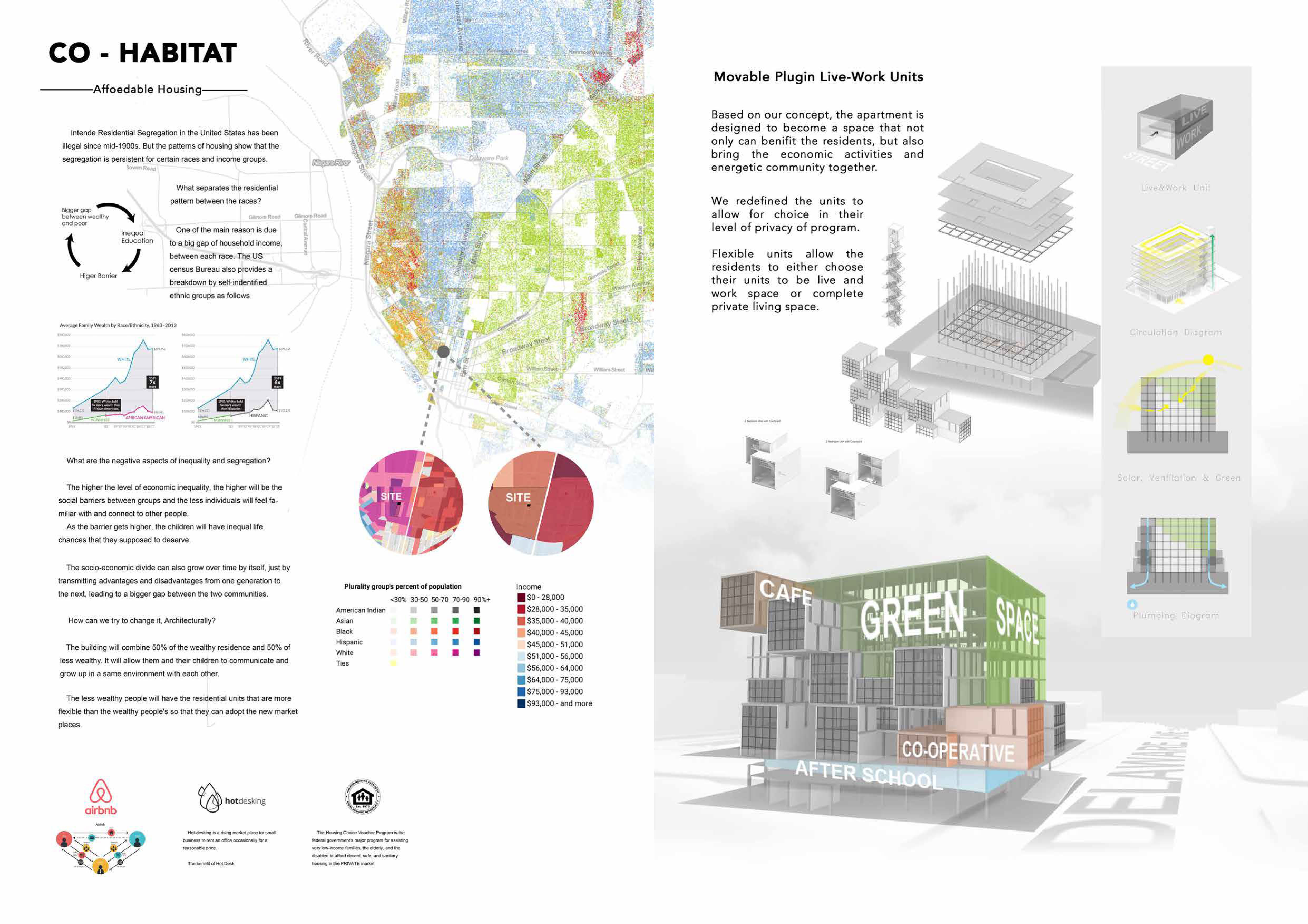


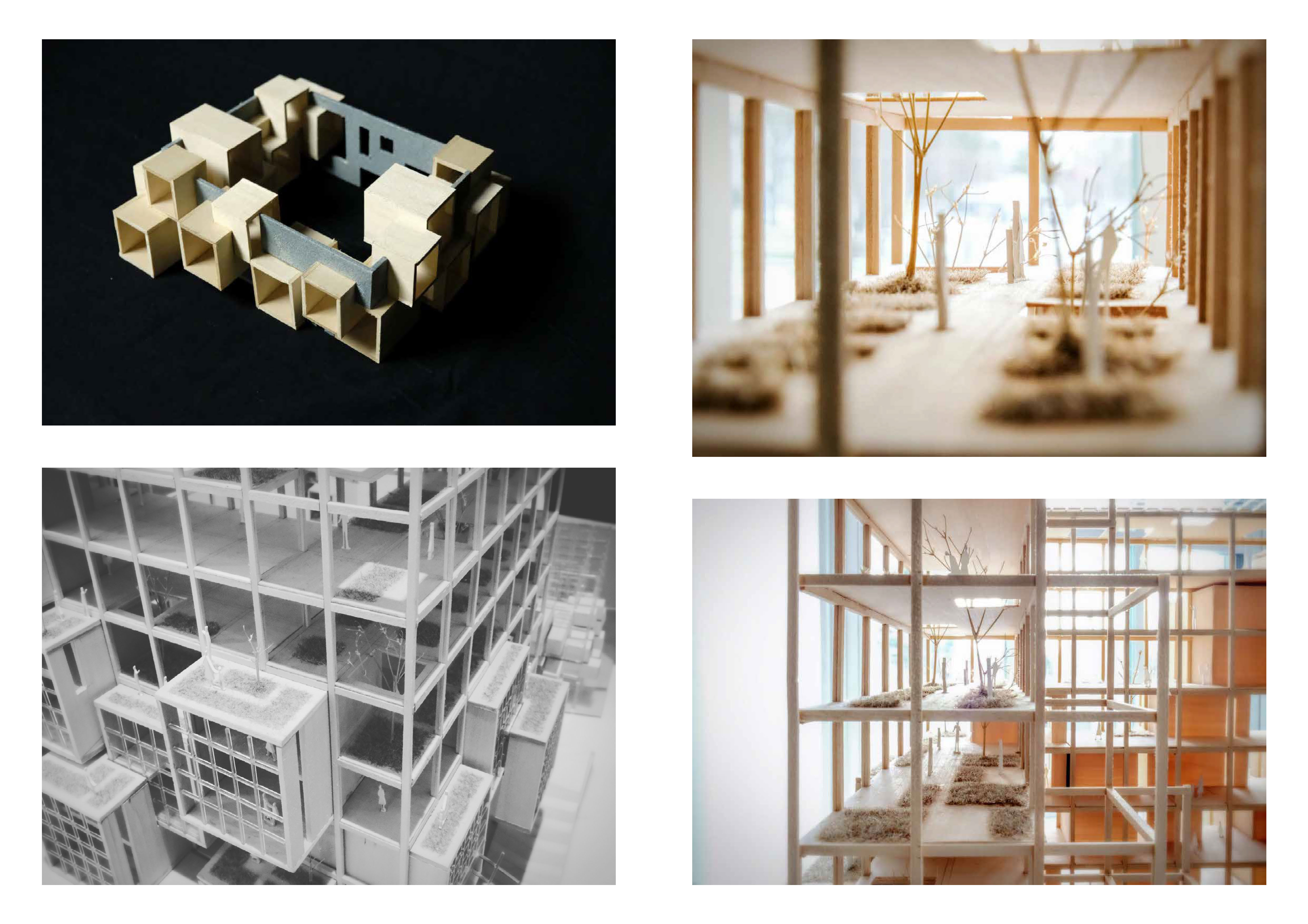

(n+d)⋅ing Collective 2021 — Chicago, Illinois
